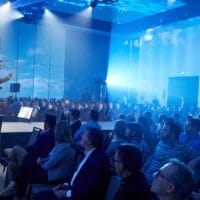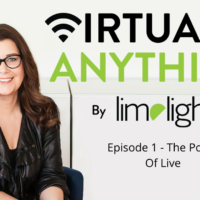Slow Meetings
By LimeLight Group
Hmmm… Slow Meetings. What would that look like? There’s a movement afoot. It’s impacting people, workplaces, and families. Studies show we are distracted and disengaged…. 47% of the time. We are running at a frantic pace. But it doesn’t have to be that way. The slow movement first appeared on the culinary front with the ‘slow food’ movement. But it’s spreading – to slow cities, slow education, slow travel… slow living.
So why not Slow Meetings? I came across this article which has some really practical tips for putting on the brakes and opening up the opportunities to improve the quality of our meetings. Whether they be around a board room table, or at a large conference or off-site. Slow down… have a read. Enjoy!
Slow Meetings by Tim Chudley, Managing Director of Sundial Group
The quest for undivided attention and deeper engagement has become the new challenge of our age. How can we make our workplace interactions more engaging, especially in those moments when we consciously choose to come together for a distinct purpose, such as in meetings?
The answer lies with Carl Honore, author of the international bestselling book ‘In Praise of Slowness’. Ambassador of the slow movement, Honore examines our global compulsion to hurry and a growing desire to ‘put on the brakes’. In contrast, he doesn’t suggest doing everything at a snail’s pace, rather doing everything at the right speed in order to gain quality over quantity experiences.
Applying Honore’s slow concept to the meetings industry isn’t difficult to do. Whilst there will always be a role for ‘short and sharp’, ‘speed’ and even ‘standing’ meetings designed to accelerate the decision-making process, these can never substitute those meetings whose aim it is to draw out creative and innovative thought. It is the latter that we in the industry need to embrace and facilitate.
‘Slow meetings’ encourage and celebrate face-to-face interaction. They enable a switch-off from technology and a switch-on to deeper, contemplative thinking. To maximize the effectiveness of slow meetings, the right environment is key. Dedicated conference venues are ideal for providing this escape, particularly those set in rural locations which provide natural stimuli. Ample grounds can be freely utilized for walking, fueling delegates with energy and inspiration from the natural world. By nature’s very contrast to the modern technological life, research shows that neurologically the brain appreciates the rest it brings, enabling it to tune-in more effectively to fresh thought and perspectives. Better still, the brain is actively encouraged to remain in an effective, creative state for as long as is required.
Another way dedicated meeting environments facilitate slow meetings is in the very deliberate way they manage the essentials required to make a meeting a success. Nothing is taken for granted; everything is designed to run fluidly and naturally, so that there is no interruption to the reflective, contemplative atmosphere. Behind the scenes, experienced staff are trained to work efficiently so delegates hardly know they’re there. Fresh food is prepared and cooked with brain stimulation in mind, designed to keep delegates going for longer, increasing their productivity without them even knowing it.
Slow meetings are all about the quality of the experience. With a venue seamlessly taking care of all practical elements, delegates are free to enjoy both the physical and mental space, liberating their minds for problem solving and finding new perspectives. In such environments deeper connections with others are also made. It is this meaningfulness that provides true meeting value and lives on long after the return to the office or technology.




